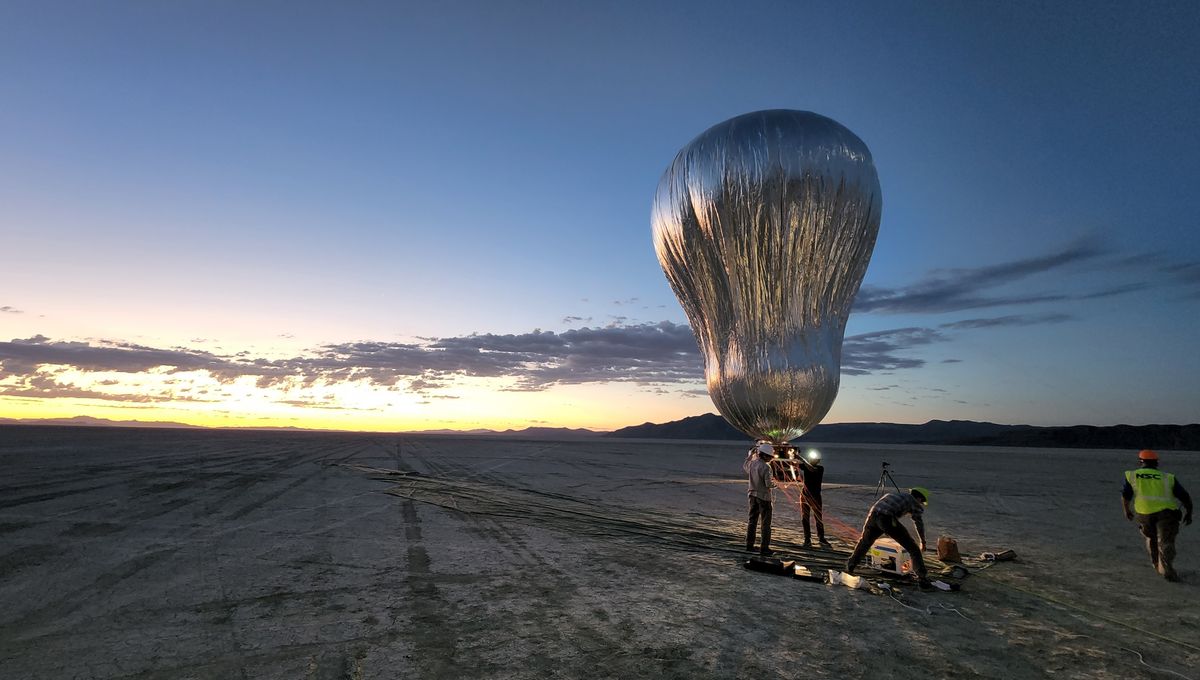
Saying that the surface of Venus is inhospitable is an understatement. The pressure is twice what you’d get at the bottom of lake superior, the temperature is high enough to melt lead, and the air is a mixture of acids. But above this hellscape, there are clouds that are a bit more forgiving to robotic probes we might send. An aerobot that might do that one day just aced its test flight.
The concept for the mission is to have the robotic balloon work with an orbiter high above the planet. The aerobot will be 12 meters (40 feet) across and travel across the clouds. A one-third scaled version has been tested 1 kilometer (4,000 feet) over Nevada’s Black Rock Desert. It flew twice in conditions similar to what it might encounter 55 kilometers (180,000 feet) above the clouds of Venus.
“We’re extremely happy with the performance of the prototype. It was launched, demonstrated controlled-altitude maneuvers, and was recovered in good condition after both flights,” robotics technologist Jacob Izraelevitz, who leads the balloon development at NASA’s Jet propulsion Laboratory (JPL) as principal investigator of the flight tests, said in a statement.
“We’ve recorded a mountain of data from these flights and are looking forward to using it to improve our simulation models before exploring our sister planet.”
The Soviets sent two balloons to Venus in 1985 on the Vega 1 and Vega 2 missions. They lasted slightly less than two days. The aerobot would ideally last at least 50 times more. It would study vibrations in the atmosphere for possible venusquakes as well as study its chemical composition, maybe providing a definitive answer to the phosphine question of life on Venus.
“The success of these test flights is a huge deal for us: We’ve successfully demonstrated the technology we’ll need for investigating the clouds of Venus,” explained Paul Byrne, an associate professor at Washington University and aerobot science collaborator. “These tests form the foundation for how we can achieve long-term robotic exploration high above Venus’ hellish surface.”
The aerobot is a balloon within a balloon. The internal one is rigid and has helium under pressure. The outer one is flexible and can expand and contract depending on the amount of helium pumped between the two or back into the inner one. This would allow maneuvering the mission between 52 and 62 kilometers of altitude (about 171,000 and 203,000 feet).
The material used is also important. While the situation in Venus’s clouds is not as bad as the surface, it is still exposed to a lot of sunlight and corrosive elements. The prototype is made of innovative materials that can perform under such conditions. The mission has not been approved but with such a technical display, this might change soon.
The aerobot prototype was designed by scientists and engineers from NASA’s Jet Propulsion Laboratory and the Near Space Corporation in Tillamook, Oregon.
Source Link: Balloon Designed To Fly Through Corrosive Clouds Of Venus Aces Test Flights